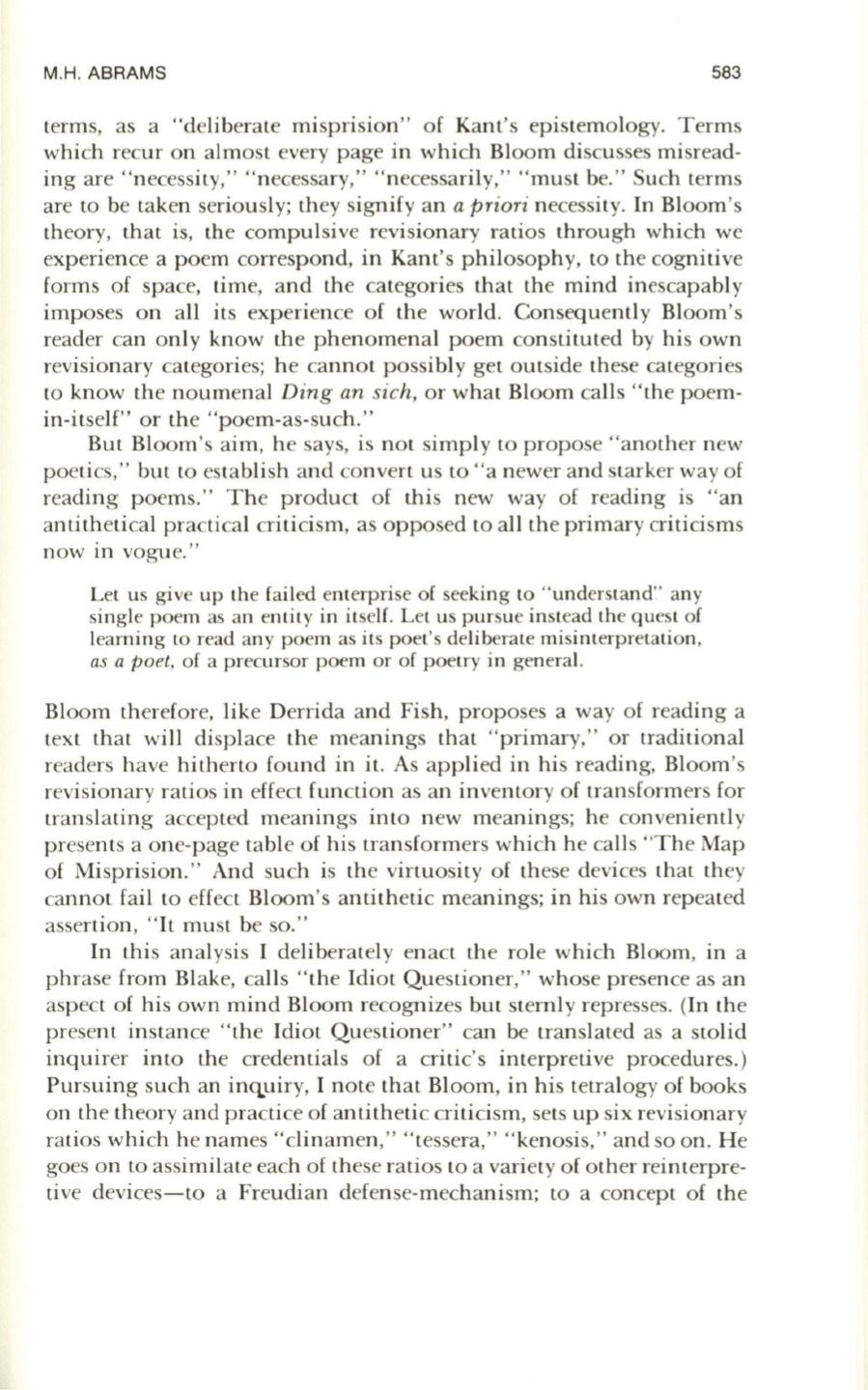
M.H. ABRAMS
583
terms, as a "deliberate misprision" of Kant's epistemology. Terms
which recur on almost every page in which Bloom discusses misread–
ing are "necessity," "necessary," "necessarily," "must be." Such terms
are to be taken seriously; they signify an
a priori
necessity.
In
Bloom's
theory, that is, the compulsive revisionary ratios through which we
experience a poem correspond, in Kant's philosophy,
to
the cognitive
forms of space, time, and the categories that the mind inescapabl y
imposes on all its experience of the world. Consequently Bloom's
reader can only know the phenomenal poem constituted by his own
revisionary categories; he cannot possibly get outside these categories
to
know the noumenal
Ding an sich,
or what Bloom calls "the poem–
in-itself" or the "poem-as-such."
But Bloom's aim, he says, is not simply to propose "another new
poetics," but to establish and convert us to "a newer and starker way of
reading poems." The product of this new way of reading is "an
antithetical practical criticism, as opposed
to
all the primary criticisms
now in vogue."
Let us give up the failed enterprise of seeking
to
"understand" any
single poem as an entity in itself. Let us pursue instead the quest of
learning
to
read any poem as its poet's deliberate misinterpretation,
as a poet,
of a precursor poem or of poetry in general.
Bloom therefore, like Derrida and Fish, proposes a way of reading a
text that will displace the meanings that "primary," or traditional
readers have hitherto found in it. As applied in his reading, Bloom's
revisionary ratios in effect function as an inventory of transformers for
translating accepted meanings into new meanings; he conveniently
presents a one-page table of his transformers which he calls ''The Map
of Misprision." And such is the virtuosity of these devices that they
cannot fail to effect Bloom's antithetic meanings; in his own repeated
assertion,
"It
must be so."
In
this analysis I deliberately enact the role which Bloom, in a
phrase from Blake, calls "the Idiot Questioner," whose presence as an
aspect of his own mind Bloom recognizes but sternly represses. (In the
present instance "the Idiot Questioner" can be translated as a stolid
inquirer into the credentials of a critic's interpretive procedures.)
Pursuing such an inq,uiry, I note that Bloom, in his tetralogy of books
on the theory and practice of antithetic criticism, sets up six revisionary
ratios which he names "clinamen," "tessera," "kenosis," and so on. He
goes on to assimilate each of these ratios to a variety of other reinterpre–
tive devices-to a Freudian defense-mechanism;
to
a concept of the


